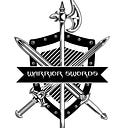What Is the Best Sword Ever Made?
Who Invented the Sword? Sword design is a fascinating and complex field. It’s about finding the perfect balance between form, function, and purpose. Throughout history, swords have served various purposes, from ceremonial items to deadly weapons used in countless battles. Each type of sword has a special design tailored to a specific task, whether it’s cutting, thrusting, or defending. The concept of a single “best” sword is difficult to define. However, we can explore some of the top contenders based on various criteria and how they excel in their respective roles.
Historical Periods and Combat Styles
Different historical periods and combat styles demanded different functionalities from swords. European knights and Japanese samurai, for example, had very different needs and preferences.
European Knights:
European knights, often clad in heavy armor, needed swords that were strong and capable of delivering powerful blows. The longsword, with its broad blade and sturdy construction, was ideal for this purpose. It could deliver heavy strikes that could damage or break through armor.
Knights also needed swords for close combat and personal defense. The arming sword, lighter and shorter than the longsword, allowed for quicker movements and was easier to wield in tight spaces.
Military swords
Military swords are iconic weapons that symbolize strength, honor, and tradition. Historically, they were crafted with precision and care, designed not only for combat but also for ceremonial purposes. Are military swords sharp? Yes, they are, with blades finely honed to be sharp enough to cut through armor or withstand intense battle, reflecting the expertise of their makers. Over time, advancements in metallurgy and design have transformed these swords into both functional tools and treasured symbols of military heritage.
Japanese Samurai:
Japanese samurai wielded katanas, swords with curved single-edged blades. The katana was designed for efficient, lightning-fast, and powerful slashing attacks, which it excelled in.
Samurai actions emphasized flexibility and dexterity, reflected in the type of swords they used. The katana also served as a symbol of their social rank, mastery of swordsmanship, and artistic skills.
Factors Influencing Sword Design
Several factors shaped sword design, including material quality, intended use, and cultural preferences.
Material Quality and Availability:
The availability of quality materials heavily influenced sword design. During the early medieval period, steel quality was inconsistent, resulting in many swords being made from iron or low-quality steel, making them more prone to breakage.
Advancements in steelmaking from the late medieval period onwards improved the quality of steel. This allowed for the production of stronger and more durable swords that wouldn’t easily break or dull with use.
Intended Use:
The intended use of a sword greatly influenced its design. Swords designed for the battlefield needed to be versatile and capable of handling various threats, from armored opponents to cavalry.
For personal defense, swords needed to be lighter and more maneuverable. These swords were designed for quick, precise strikes and easy handling, making them effective in close quarters combat.
Cultural Preferences and Fighting Styles:
Cultural preferences and fighting styles also played a role in shaping sword design. Different cultures developed unique fighting techniques, which influenced the shape, size, and balance of their swords.
European weapon makers created strong swords with straight, double-edged blades, reflecting the emphasis on physical strength when confronting an opponent.
Active voice revision: “The curved, single-edged katana blade was used in Japan because it was fast and precise, matching the tactics and culture of the samurai.”
Top Contenders for the “Best” Sword
There isn’t a single undisputed “best” sword, but several contenders excel in various aspects:
The Katana
History and Cultural Significance in Japan: The katana is a tool that played a significant role in Japanese history and remains an essential part of Japanese culture even today. It was employed for both protection and as a representation of a samurai’s skill and honorable spirit. To the samurai, the katana was not just a weapon but the quintessential symbol of their way of life.
Design Features:
Curved Blade: The katana has a distinctive curved blade, making it excellent for cutting.
- Single-Edged: Sharpened on one side, enhancing its sharpness and cutting ability.
- Cutting: The design optimizes powerful, precise cuts.
Strengths:
- Exceptional Sharpness: The katana’s exceptional sharpness allows it to slice through targets with ease.
- Powerful Two-Handed Cutting Ability: Designed for use with both hands, the katana provides strength and control for powerful cuts.
The Longsword
European Dominance During the Middle Ages: The longsword was a favorite type of sword in Europe for several centuries during the Middle Ages. Knights and soldiers primarily used it, making it central to medieval warfare.
Design Features:
- Straight, Double-Edged Blade: The longsword has a straight blade sharpened on both sides, making it versatile for both slashing and thrusting.
- Versatile: The longsword’s versatility allows it to be used for a variety of fighting styles, either one-handed or two-handed.
Strengths:
- Well-Balanced: The longsword’s balance makes it effective in both offense and defense.
- Adaptable: Its design allows for adaptation to various fighting
